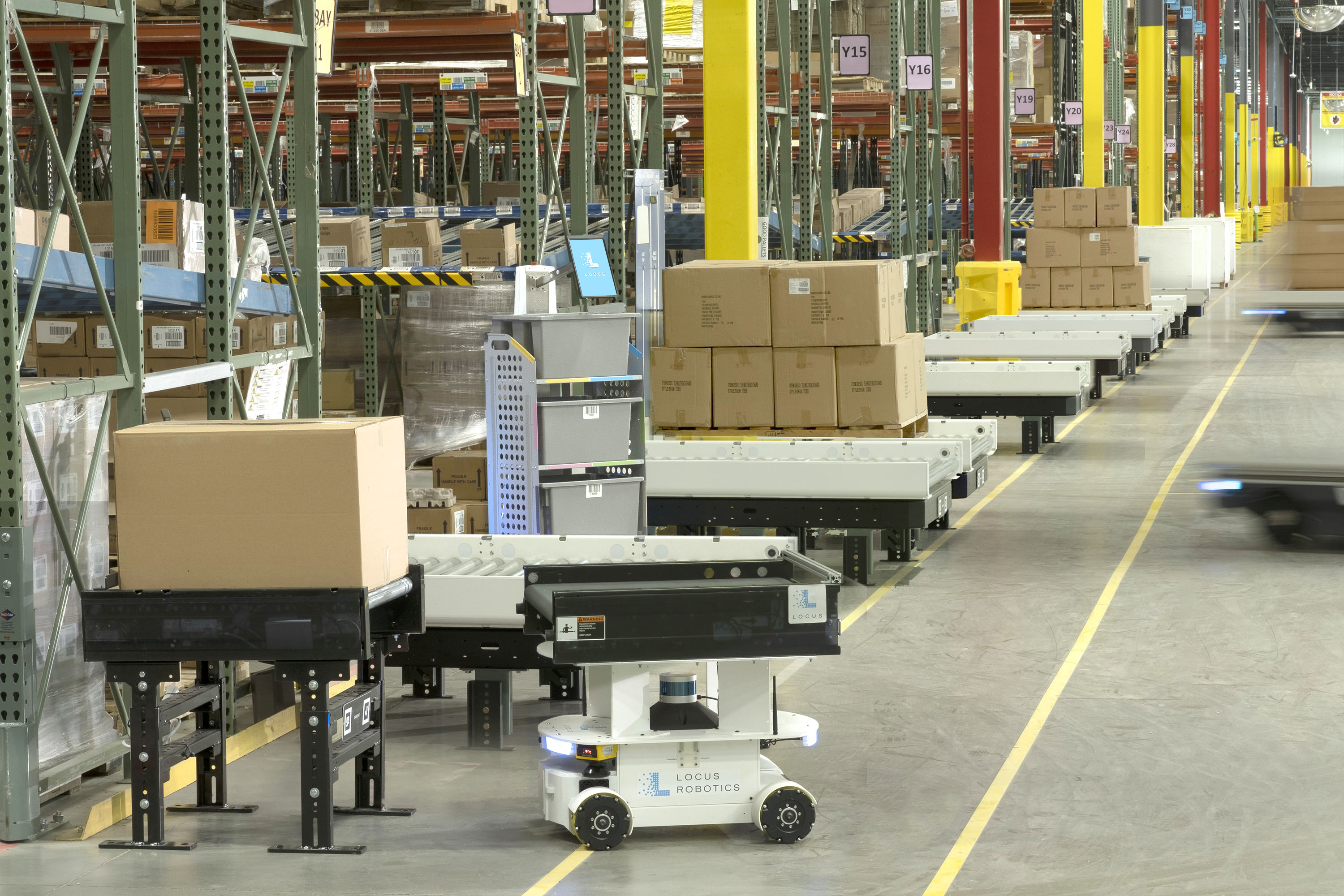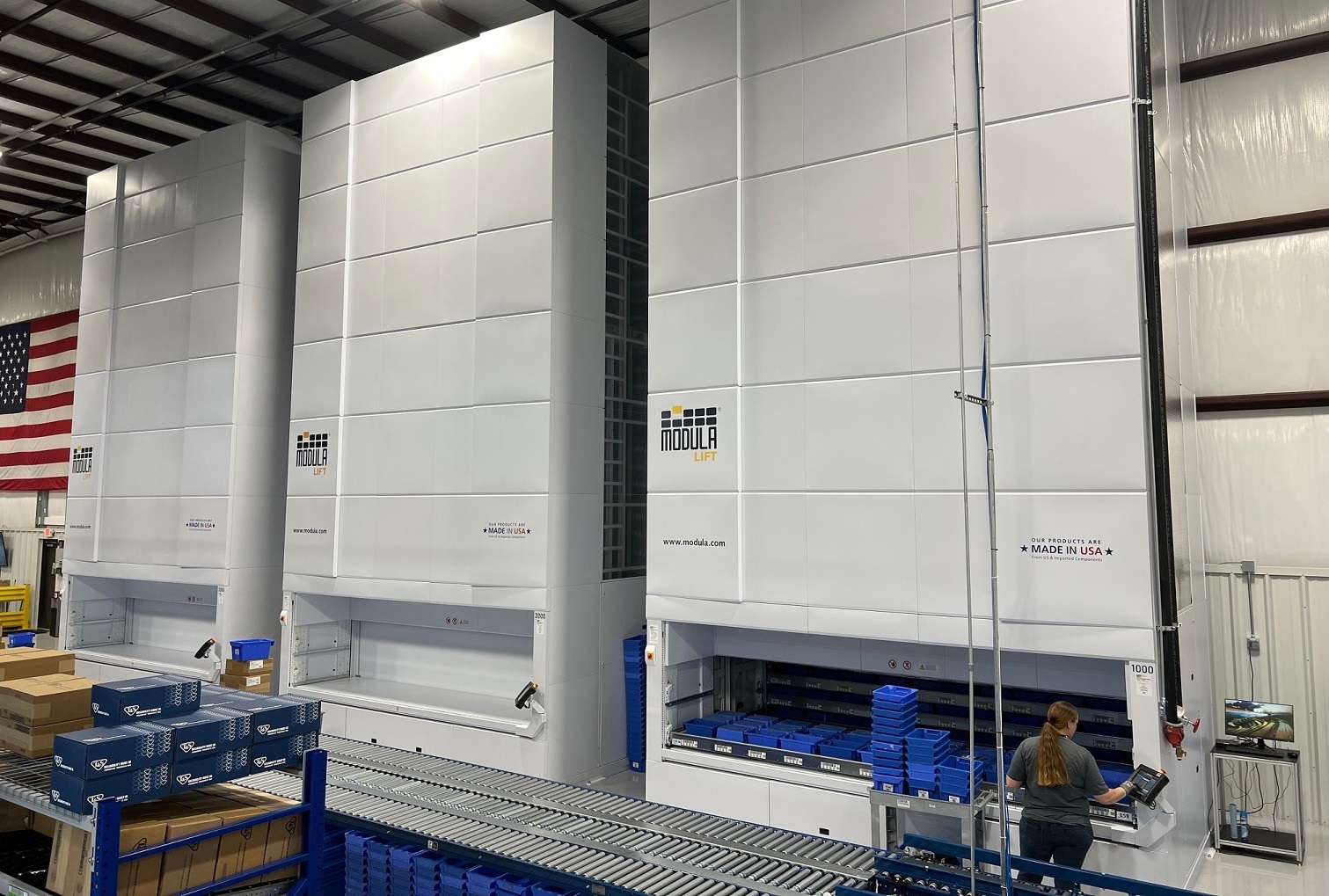The rate of change being experienced today in the material handling industry is likely the slowest rate of change of the next few years, according to industry analysts. As labor and productivity challenges continue, more and more companies are searching for solutions to increase efficiency and throughput in their facilities, with the adoption of automated solutions predicted to increase by more than 16 percent in 2024.
There were a lot of new, shiny objects for material handling on display during MODEX March 11-14 in Atlanta, but it’s important to understand that there is no one-size-fits-all automation solution, says Justin Benson, Carolina Handling VP of Intralogistics Solutions.
“There is an ecosystem that exists within any facility and it’s important to understand what that looks like for your specific operation,” Benson said. “Earth itself is an ecosystem with land, air and water working in conjunction with one another. The same applies for intralogistics operations. Material handling operations are a unique ecosystem in which if one element is off, it affects the others.”
As companies look for ways to up the tempo and rhythm in their facilities, they should be aware of how automation will affect processes upstream and down. For example, if automation is installed upstream in a facility, will downstream operations be able to handle the increase in productivity?
When considering automation solutions, it is important to understand the interconnected ecosystem, or the continuous flow between technology, data, equipment and aftermarket support.
Technologies such as telematics, labor management and warehouse management systems give operations managers the ability to see and analyze data to make sound decisions on processes and equipment to achieve the highest productivity and efficiency.
For example, iWAREHOUSE telematics offers the ability to monitor equipment usage in real time and track operator access and utilization. Reports can be used to make recommendations on how to rotate equipment to balance unit usage hours and reduce cost per hour. Data collected on individual trucks can be used to rightsize a fleet or to optimize vehicle utilization.
In one case study, The Raymond Corporation installed iWAREHOUSE for a company that was utilizing a robust labor management system which showed 100 percent associate utilization and productivity each day. During the pilot project, iWAREHOUSE technology was installed on forklifts on the inbound side of the operation, which involved lift trucks going into a trailer, picking up a pallet and placing it on the dock.
“We were surprised to see the results of that pilot project,” said Melinda Laake, Raymond Corporation Director of Intralogistics Solutions. “The forklift utilization was only at 36 percent because associates were going into the office to get orders, wrapping pallets and performing a number of supportive tasks, but it was taking away utilization of the equipment.”
The data showed an opportunity to change the process. By hiring additional associates to handle supportive tasks, the company was able to maximize utilization and reduce the number of lift trucks needed in its inbound operations.
Today’s material handling solutions extend far beyond lift trucks to include automated guided vehicles (AGVs), automated mobile robots (AMRs), conveyors, automated storage and retrieval systems and many other automation products. But reviewing and refining your operational processes is a key first step before making equipment decisions, especially when considering automation solutions, Benson says.


“It’s important to review your processes before making decisions because you don’t want to automate a bad process,” he said. “Technology and data will help you do that by offering insights into material flow, productivity and performance. The data will show bottlenecks and waste and help pinpoint specific areas for improvement.”
Another important element of the facility ecosystem is aftermarket support. Product support, parts availability and service maintenance and repair all should be considered when making equipment decisions.
“You don’t buy a new car and drive it until the wheels fall off,” Benson said. “You go in every 5,000 miles or so and get the oil changed and tires rotated. The same thing is true with any type of industrial or automated equipment.”
The increasing complexity of interconnected automation requires a focus on tactical solutions rather than a broad brush, Benson adds. Companies should consider the following:
- Find a trusted partner to implement solutions based on operational goals and priorities
- Look for complementary solutions and evaluate the impact of implementing new solutions into your facility’s ecosystem
- Find agile solutions that are adaptable as technology and needs change
- Consider the ongoing need to maintain solutions with support services planning
As an end-to-end solutions provider, Carolina Handling offers consulting, engineering design, product selection and installation and aftermarket support to help companies achieve greater productivity and throughput.
Go HERE for more information on integrated solutions from Carolina Handling.


